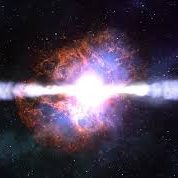Seminari
Monday 13/01/2020 @ 11:30, Sala riunioni quarto piano
Marco Marongiu (University of Ferrara), "Broadband modelling of relativistic explosions"
The transient sky astronomy has made great strides in recent years, propelled by the progress of state-of-the-art technology. Relativistic explosions and their progenitors, such as gamma-ray burst (GRB) and relativistic supernovae (SN), are the focus of forefront research and can be studied not only over a broader range of the electromagnetic spectrum, but also through high-energy neutrinos and gravitational waves (GWs). GRB afterglows --broadband long-lasting emissions originating from the interaction between the relativistic ejecta and the circumburst medium-- are crucial to investigate many open issues, such as relativistic shock microphysics, energetics, the jet structure, and the magnetization of the ejecta. All these issues are ideally constrained through observations at radio frequencies, which are however hampered by the typical faintness (mJy or sub-mJy) of the sources, resulting in a mere 30% of detection rate. Except for a couple of ambiguous cases, long GRBs are found to be associated with type Ic broad-lined supernovae (Ic-BL SNe), detected –with current facilities– at redshift z < 1. In general, only a fraction of Ic-BL SNe harbours a relativistic jet detectable as a GRB. There are different altenative interpretations: (i) true absence of any GRB jet, (ii) there is a GRB jet, whose axis is off our line of sight though (“off-axis scenario”), (iii) the jet fails to make it out to the progenitor’s photosphere (“chocked jet scenario”). In this talk I will discuss the broadband modelling of relativistic explosions, and how single-dish radiotelescopes can effectively contribute to the field.

